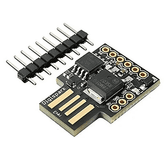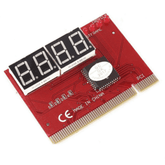How to Uninstall Apps or Software on Raspberry Pi

Steps to Uninstall Apps or Software from Raspberry Pi
There are two primary methods for uninstalling apps from Raspberry Pi boards: using the graphical interface and using the command line. Let’s look at both, so you can choose the method that suits you best.
1. Using the Graphical Interface (GUI)
If you’re using Raspberry Pi OS with Desktop, you can uninstall programs on Raspberry Pi just like you would on a regular computer—no coding required.
- Find the Raspberry Menu: Click the Raspberry icon in the top-left corner of your screen.
- Go to Preferences: From the menu, select Preferences.
- Open Add/Remove Software: Click on Add/Remove Software. This tool works like an app store for your Raspberry Pi. It lists all the software you can add or remove.

- Search for the App: Type the name of the app you want to remove in the search bar.
- Remove the Package: When you find the app, right-click it and select Remove Package. Click Apply to confirm and enter your password if prompted. That’s it. The app is gone!

This method is great if you’re not comfortable with the command line, but it does have some limitations. Sometimes, you might not find the exact app you’re looking for, especially if it was installed differently.
2. Using the Command Line (Terminal)
If you prefer a bit more control, the terminal is your friend. Here’s how it works:
Open the Terminal: You can find the terminal icon on your desktop or press Ctrl+Alt+T to open it. It will look something like the image below.

-
List of all Installed Packages: To see what’s installed, type:
dpkg –list - All the installed packages will be shown by running this command. Look for the name of the app you want to remove.
-
Remove the Package: To remove the software, use:
sudo apt remove package-name - Replace package-name with the actual name of the app you want to uninstall.
-
Remove Everything (Including Config Files): If you want to make sure all traces of the app are gone, use:
sudo apt purge package-name - This will uninstall the program and delete its configuration files too.
-
Clean Up: After removing apps, you can clear out leftover files with:
sudo apt autoremove - This removes any packages that were installed as dependencies but are no longer needed.
-
Clear the Cache: To free up memory, you can also clear the package cache:
sudo apt clean - This deletes downloaded package files that are no longer required
How Do I Delete Something on My Raspberry Pi?
Sometimes, you might want to delete something that isn’t an app—like a file or folder. Here’s how you can do that:
- Using the File Manager: Double-click the File Manager icon on your desktop. Navigate to the file or folder you want to delete, right-click it, and select Delete.
-
Using the Terminal: If you’re comfortable with the command line, you can delete files with:
rm filename -
To delete a folder and everything inside it:
rm -r foldername - Be careful with these commands, because deleted files can’t be easily recovered
Conclusion
Keeping your Raspberry Pi tidy doesn’t have to be complicated. Whether you prefer clicking around in the desktop or typing commands in the terminal, you now have the tools to remove software and free up space whenever you need to. Regular cleanup helps your Pi run faster, gives you more room for new projects, and keeps your system organized.







